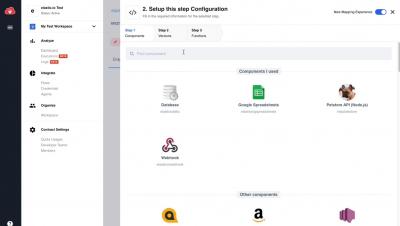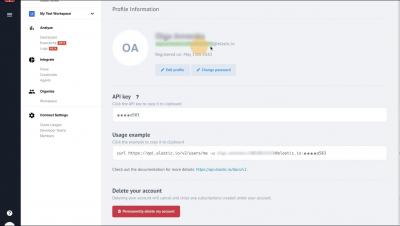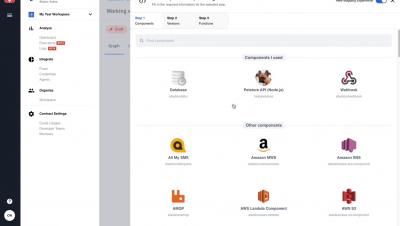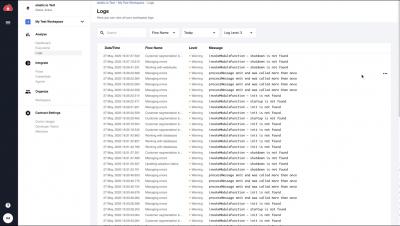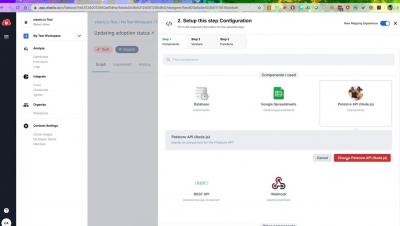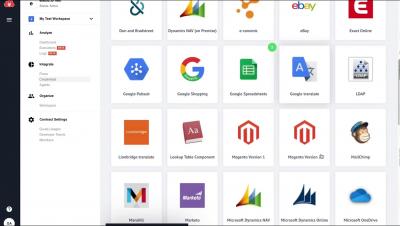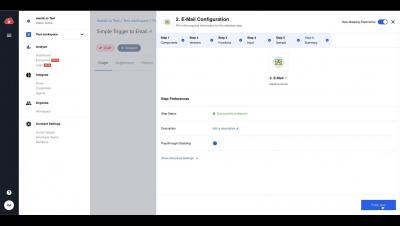How to add own components
With the code component, you can add any type of code and therefore, create your very own, custom connectors. It’s dead simple to use – it is already provided with some default code for reference, which you can, of course, delete and replace with yours.


